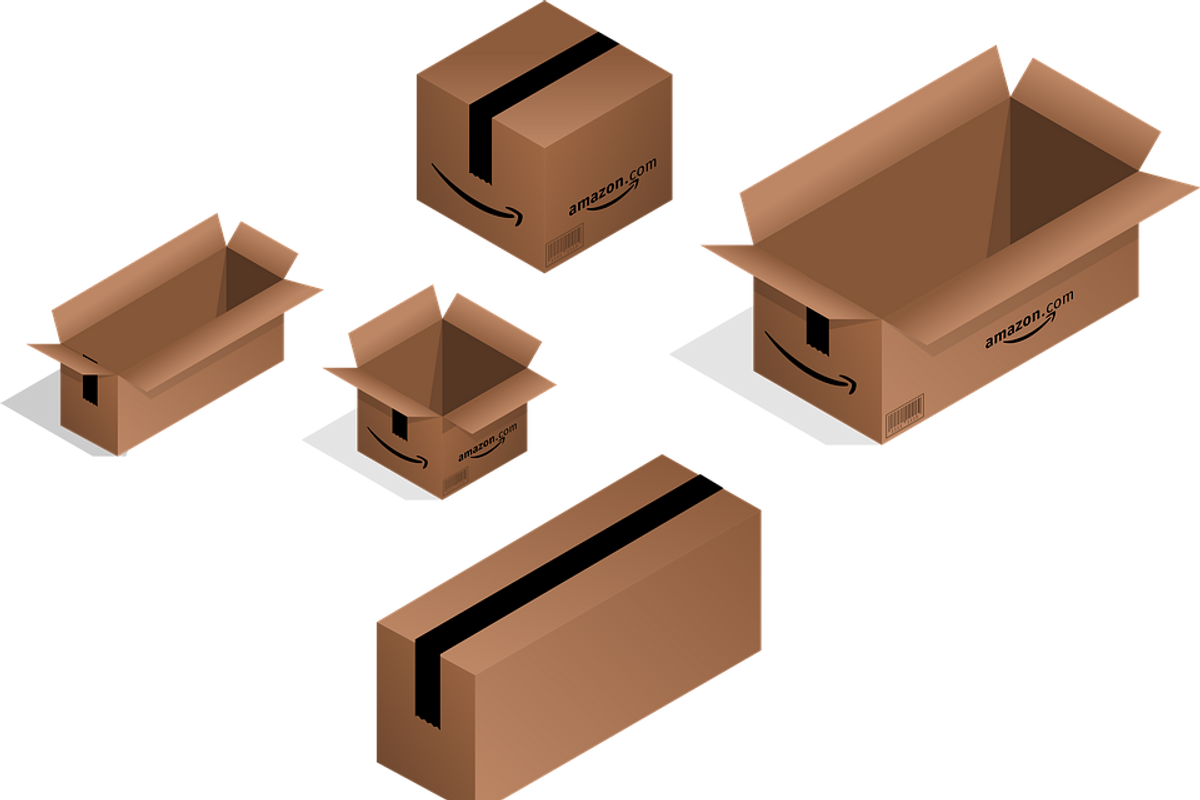Fulfillment By Amazon (FBA) doing more for the smallest and largest items that its sellers ship.
In between delivering big news about a fuel surcharge and a new program that extends Prime throughout the internet, FBA made a pair of key inventory-related announcements on Seller Central April 18.
The changes will bring more items to a program for small items and add a new XL storage category within FBA, which allows third-party sellers to access Amazon’s logistics network for storage, fulfillment and shipping to move their goods. They were first reported by Ecommerce Bytes.
Here's a quick breakdown:
Small and Light threshold increased
Amazon is thinking of the little guys with one change.
FBA increased the price threshold for products to be eligible for FBA’s Small and Light program from $8 to $10.
The Small and Light program offers reduced fulfillment costs for smaller, low-cost items.
“This change allows more of your products to become eligible for the program and receive fulfillment discounts,” the company wrote to sellers. “Other program eligibility requirements, such as weight limits and product dimensions, will remain the same.”
The change takes effect on April 28.
Extra-Large storage capacity added

A screenshot of Amazon's comparison of Extra-large vs. oversize items. (Image via Amazon Seller Central)
In another announcement, Amazon said it is adding a new classification on the larger end of the capacity scale.
Extra-large is a new size for storage, Amazon said in a message. This will be available in addition to the existing oversize storage type.
“This new storage type gives you more flexibility in how you manage your inventory and quantity limits for larger items,” Amazon wrote.
Extra-large items are bigger than oversize in key measurements, according to details on the FBA website. Meeting a qualification for extra-large requires the longest-side length of 96 inches or more, a girth of 130 inches or more and a weight of 50 pounds or more.
The company said classifications will be “based on past and forecasted sales, adjusted by fulfillment center capacity.” The announcement did not detail exact sizes, but rather directed sellers to check their monthly storage fees reports.
Existing inventory that qualifies for the extra-large storage type be will be reclassified, the company said.
FBA vs. FBM
Any change to FBA can have massive scale, as the service is used by the vast majority of sellers on Amazon. According to The State of the Amazon Seller 2022 report by Jungle Scout, 89% of Amazon's two million third party sellers store and send goods through FBA.
Amazon is by far the largest ecommerce service, and making its vast fulfillment network accessible through FBA has helped it grow. However, FBA still operates in a competitive marketplace, and the company felt that pressure in recent years.
After all, FBA is not the only option for Amazon sellers. The other is Fulfillment by Merchant (FBM), in which sellers are responsible for the fulfillment of their orders. When sellers choose this option, they either fulfill orders themselves, or opt to work with a third-party logistics (3PL) company. (About one-fifth of sellers use both options.)
Over the last few years, FBM gained more sellers as FBA put limits on inventory. From Jungle Scout's report:
Amazon began restricting FBA inventory in 2020, possibly due to COVID-19-related strains on its fulfillment network. Many FBA sellers could no longer store all the inventory they needed in Amazon’s fulfillment centers, and had to find a quick alternative. From 2020 to 2021, the percentage of Amazon sellers using FBM jumped nearly 10%. Though Amazon has updated the terms of its inventory limits, many sellers still find themselves with too much inventory for their allotted FBA storage.
Amid the supply chain challenges of 2021, 20% of sellers, pivoted to FBM, the report states.
"While FBA will likely continue to be the primary fulfillment method for Amazon sellers, FBM capacity is an important plan B," the report states.
Enabling more discounts for small items and adding flexibility for large packages has the knock-on effect of creating further incentives for sellers to choose FBA.
Latest FBA moves
These aren't the only inventory-related changes Amazon made in recent months.
In December 2021, FBA reduced the threshold for its Inventory Performance Index so that "less than 10% of sellers will have storage volume limits." It also said it increased restock limits during the 2021 holiday season, enabling sellers to replenish their quantities of goods. It added that it intended "to do the same for many more sellers early next year.”
Starting on April 28, Amazon will implement a 5% surcharge on FBA orders to account for fuel and inflation. The company characterized it as a temporary move when it announced the surcharge on April 14. This came after it made permanent changes to fees to account for rising supply chain-related costs in January.
FBA sellers will also be the first to be able to participate in a new program that allows merchants to offer Prime benefits when selling through websites beyond Amazon.com. Buy With Prime allows merchants to offer Prime’s next-day delivery, free returns and checkout to members through a button that can appear on other websites. When it unveiled the program on April 21, Amazon said select FBA sellers will be the initial participants, with others following during the rollout this year.
With all of these changes now in place, sellers will make changes accordingly.The Current will continue to monitor their impact.
Related Articles Around the Web









 A Hexa 3D rendering (Courtesy photo)
A Hexa 3D rendering (Courtesy photo)



